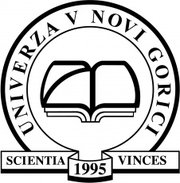Astroparticle physics
Duration: 1.1.2015 - 31.12.2021
Project type: ARRS Programme
The proposed program is oriented towards the studies of processes at the extreme energy scales in nature. Its main goal is to push the frontier of knowledge regarding the ultra-high energy cosmic rays (UHECR), very-high energy (VHE) gamma rays and elementary particles. The proposed activities are embedded into the work of international research collaborations Pierre Auger, CTA and Belle2.
UHECR research will be pursued within the P. Auger Collaboration. Its work has insofar led to major breakthroughs, such as the evidence of a strong suppression of the UHECR flux above 55 EeV, anisotropy of their arrival directions, and tight limits on the UHE photon and neutrino fluxes. Major open questions that remain, such as particle composition of the UHECR flux and the identity of their sources, will be studied in detail in the scope of the proposed program. For this purpose, the Auger observatory will be substantially upgraded and will provide information on muon contents of the extensive air showers, which will facilitate identification of the primary UHECR. We will take an active role in the science and upgrade activities, focusing on the composition and anisotropy studies of the highest-energy particles.
The research of very high energy (VHE) gamma-rays will be pursued within Cherenkov Telescope Array (CTA) Consortium. Gamma-rays that are produced as secondaries in the UHECR acceleration and in the inelastic interactions during their propagation are not affected by interstellar magnetic fields and can be used to trace back to the location of UHECR sources. CTA Consortium will build two observatories for VHE gamma-rays providing full-sky coverage, improved sensitivity, angular and energy resolution with respect to current experiments. Scientific activities, scheduled to begin with partial array in late 2016, are expected to bring significant progress to the studies of cosmic ray sources, acceleration mechanisms, gamma-ray interactions with interstellar medium, as well as the nature and variety of black hole particle accelerators. In addition, due to its superior sensitivity, CTA will serve as a tool in dark matter search, Lorentz invariance violation and other fundamental physics tests.
The proposed scientific goals of both Auger and CTA collaborations will be supported and complemented by theoretical studies in quantum gravity, focusing on string theory, which is currently the most promising candidate for a unified quantum theory of particle physics and gravitational physics. Another complementary activity will be pursued through our involvement in the Belle2 experiment, probing "new" physics with precision measurements of B meson decay properties.


